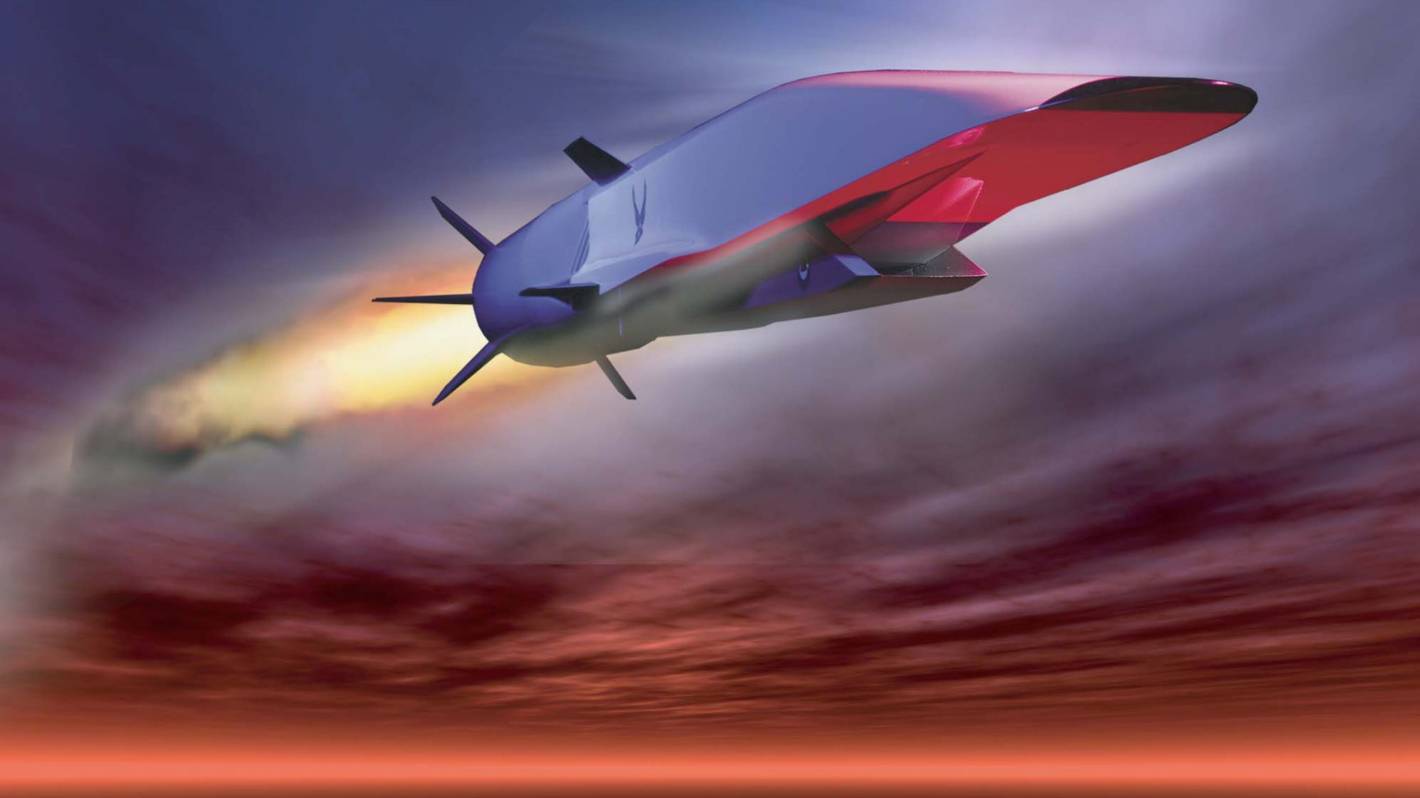The US military conducted a successful free flight of the Hypersonic Air-breathing Weapon Concept, marking the third successful test of that class of weapon, the Defense Advanced Research Projects Agency (DARPA) said on July 18.
DARPA oversees the development of the Hypersonic Air-breathing Weapon Concept (HAWC). Raytheon and Lockheed Martin Corp are contending for the final contract. Air-breathing vehicles use atmospheric air to propel themselves for an extended period.
The issued statement said that the Hypersonic Air-breathing Weapon Concept (HAWC), a missile project run by DARPA in collaboration with the US Air Force, completed another free flight in early July.
The flight was conducted using a Raytheon Technologies demonstration vehicle to meet its test objectives. The data from the first test, which took place in September 2021, was also used in this flight.
? #BREAKING: #RaytheonDefense and @northropgrumman complete second #hypersonic weapon flight test. Learn more: https://t.co/cCaXvNdHWR #Hypersonics #HAWC #HypersonicMissile #HypersonicWeapon #FIA2022 pic.twitter.com/7B4psL9uih
— Raytheon Missiles & Defense (@RaytheonDefense) July 18, 2022
So far, there have been a total of four air-breathing weapon tests. While Lockheed had one successful test and one failure, Raytheon’s tests were successful both times.
Wes Kremer, president of Raytheon Missiles & Defense, previously explained that the HAWC’s success during its first test was a significant milestone and a moment in history to demonstrate its capability.
HAWC required a lot of steps to be taken. Since a scramjet powers it, there are no moving parts. To generate thrust, the scramjet essentially compresses and heats the airflow.
“After releasing from an aircraft, the first stage boosted the vehicle to the expected scramjet ignition envelope. From there, the missile’s Northrop Grumman scramjet engine fired up and propelled the cruiser to speeds greater than Mach 5 (five times the speed of sound) for more than 300 nautical miles and reaching altitudes higher than 60,000 feet,” the statement said.
HAWC program manager in DARPA’s Tactical Technology Office, Andrew Knoedler, said the test allowed for the exploration of more of the flight and scramjet engine operating envelopes.
“The Navy and Air Force will have access to the data we’ve collected as they make development decisions for future high-speed weapons,” Knoedler added.
Raytheon Technologies noted in a separate statement that the test met all primary and secondary objectives, including demonstrating tactical range capabilities.
“The test demonstrated how we’ve rapidly matured affordable scramjet technology, which is the basis for air-breathing weapons,” the statement said.
It marks the third successful test in a recent series of hypersonic weapons developed by the US under different programs. On the other hand, the Common Hypersonic Glide Body test flight at the Pacific Missile Range Facility in Hawaii on June 29 failed.
The development of hypersonic weapons, the next generation that can evade conventional air defense systems, is gaining momentum in the US. Hypersonic weapons can reach speeds of up to 6,200 km/h (3,853 mph), or more than five times the speed of sound.
Hypersonic Air-Breathing Weapon Concept (HAWC)
The Hypersonic Air-breathing Weapon Concept (HAWC) program is a collaborative effort between DARPA and the United States Air Force (USAF) to develop and demonstrate critical technologies that will enable a practical and cost-effective air-launched hypersonic cruise missile.
The program aims to validate crucial technologies through quick, affordable, and effective flight tests. The long-range missile is intended to move at Mach 5 and higher speeds, enabling greater accuracy and quicker reaction times.
Raytheon Missiles & Defense and Northrop Grumman collaborated to develop this concept, with competition from Lockheed Martin. Lockheed Martin is also collaborating with Aerojet Rocketdyne.

The deal uses the private sector’s collective expertise to show that it is prepared to produce tactical missile systems of the newest generation. The contract makes it possible for the businesses to cooperate on HAWC and other potential air-breathing hypersonic missiles in the future.
The HAWC program investigates cutting-edge air vehicle designs with effective hypersonic flight capabilities. The project specifications also call for a hydrocarbon-based scramjet engine to enable better cruising at hypersonic speeds.
The research-based efforts aim to reduce the thermal stress experienced by the missile during high-temperature flight. The emphasis is also on manufacturing techniques and cost-efficient, scalable system designs. The HAWC vehicle operates most effectively in oxygen-rich environments where detection is difficult due to its speed and maneuverability.
Meanwhile, DARPA recently also announced the first successful demonstration of a ground-launched hypersonic missile system for the Operational Fires program.
The US Air Force also previously disclosed that on July 13, a hypersonic missile booster for the Air-Launched Rapid Response Weapon, or ARRW, underwent a second consecutive successful test.
- Contact the author at ashishmichel@gmail.com
- Follow EurAsian Times on Google News





